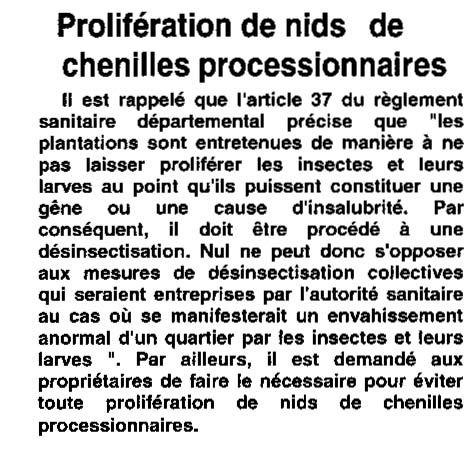There is a law which states people should prevent the spread of these insects, although I've never heard of any action being taken if one doesn't:

Some people in our village put them in a bag and take them to the dump. We feel this is not enough because the hairs can remain active for many years after, not to mention that if the bag breaks open, the caterpillars might escape. The only way is to burn them, or pour boiling water over them.
When we first arrived at our house, there were several pine trees on the property, all containing nests - in one tree alone there were over 50 nests - calculate how many caterpillars there are when there can potentially be 350 per nest - nasty.
Here is a link to a blog post I made a few years ago, complete with photos and facts:
http://wouterpamela.blogspot.fr/2008/12/processionary-caterpillars.html
For 3 years we have been chenille nest free, but this year we had 5 nests in a tree (Himalayan Cedar) - note they are not always in pine trees but have a preference for the Pin d'Alep, although most pine trees are acceptable for nesting.
Even if they have already 'marched', it's best to remove and burn the nests as they contain pheramones which will attract new babes to the tree next season.
Personally we know of two dogs (one with holes in his tongue - luckily he didn't lose his tongue) and one child who have been affected by them. Nature lovers we are, but these insects need to be stomped out. As far as I am aware, the only predators are hoopoes, which eat the caterpillars, and moles, which eat the larvae. If I spot these nests in trees in our village, I post a copy of the article above in their letterbox.